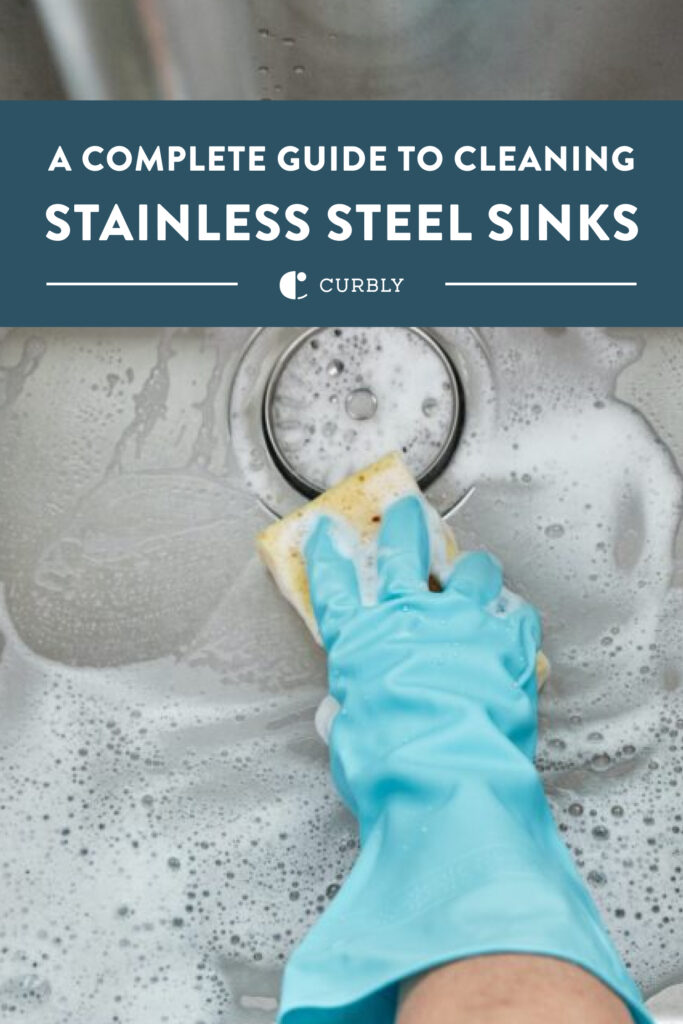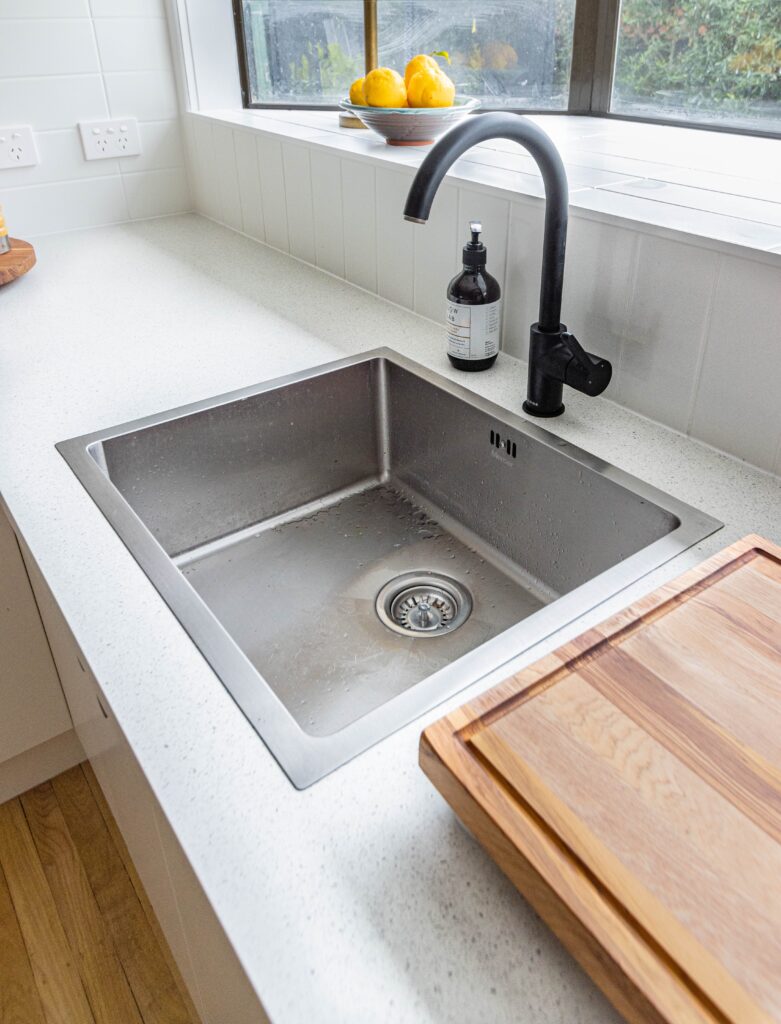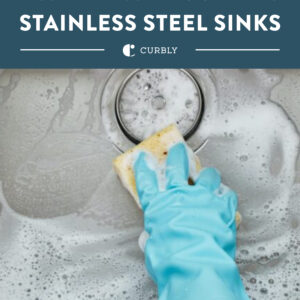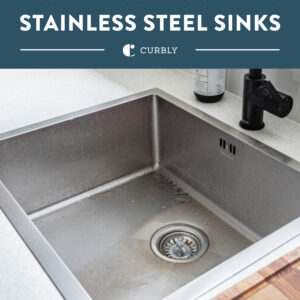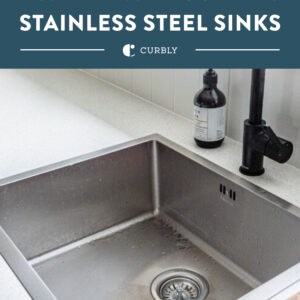Are you tired of those annoying, unsightly stains, scratches, and water spots on your stainless steel sink? After washing piles of dirty pots and pans day after day, your sink can take a pretty good beating. But fear not; we’re here to help you make it look brand new again!
In this ultimate guide, we will walk you through the step-by-step instructions on cleaning and maintaining your stainless steel sink, using all-natural cleaners you can find in your pantry, ensuring it stays shiny and beautiful for years to come.
If you’re ready to say goodbye to your dull and dirty sink, grab your cleaning supplies, roll up your sleeves, and follow along as we teach you how to make your sink the “shining” star of your kitchen again!
How to Clean a Stainless Steel Sink
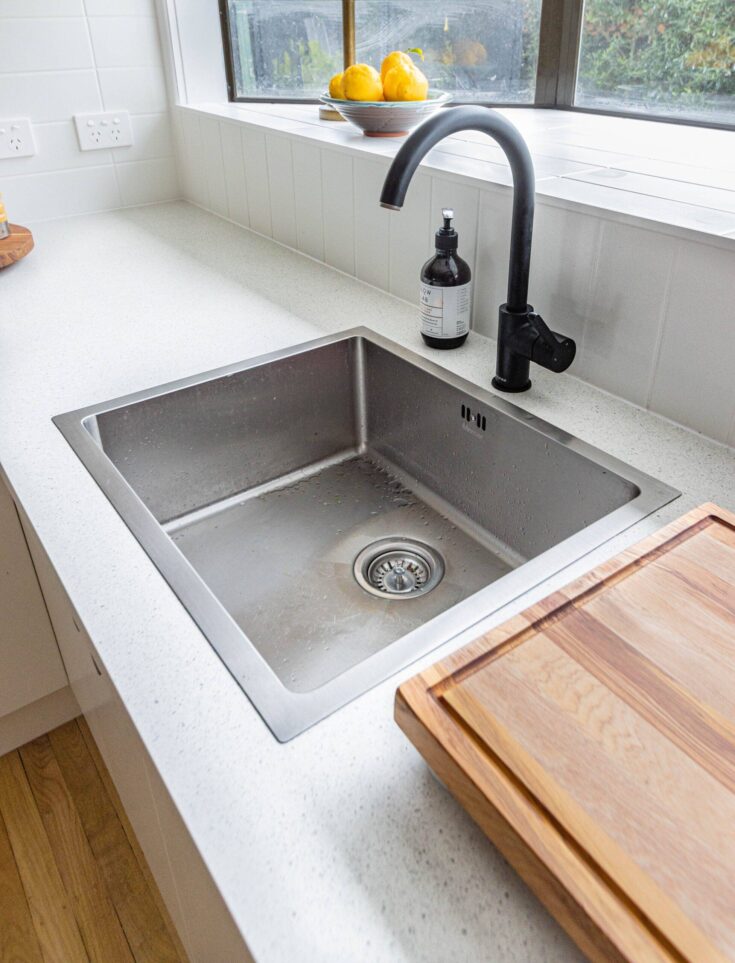
In this ultimate guide, we will walk you through the step-by-step instructions on cleaning and maintaining your stainless steel sink, using all-natural cleaners.
Materials
- Mild dish soap
- Baking soda
- Lemon
- Olive oil
Tools
- Soft microfiber cloth or sponge
- Soft-bristle brush
Instructions
- Gather Your Supplies: Soft microfiber cloth or sponge: Opt for a non-abrasive cloth or sponge to avoid scratching the surface of your sink. Mild dish soap: Choose a gentle dish soap that is free from harsh chemicals or abrasive ingredients. Baking soda: Baking soda is a natural cleaner that can tackle tough stains and odors. Lemon: Citrus fruits contain natural acids that can help remove stubborn stains and add a fresh scent to your sink. Olive oil: Olive oil can be used as a natural polish to add shine and prevent water spots on your sink's surface. Soft-bristle brush: Use a soft-bristle brush for scrubbing hard-to-reach areas and removing stubborn grime.
- Wash any dishes: If you have any dishes remaining in the sink from last night's dinner, wash them.
- Rinse the sink: Rinse the sink with warm water to remove loose dirt and food particles.
- Apply soap to a sponge or cloth: Apply a small amount of mild dish soap to your soft microfiber cloth or non-abrasive sponge.
- Scrub the sink: Gently scrub the entire surface of your sink, paying extra attention to any areas with visible stains or grime. Use gentle circular motions to avoid scratching the stainless steel.
- Rinse the sink: Rinse the sink thoroughly with warm water to remove any soap residue.
- Sprinkle baking soda: Sprinkle baking soda over the entire surface of the sink, including the sides.
- Scrub with a lemon: Using half of a lemon, gently scrub the baking soda into the sink in the direction of the stainless steel grain to remove stains.
- Rinse with warm water: Rinse your sink with warm water to remove the baking soda/lemon residue.
- Wipe down with olive oil: To add extra shine to your stainless steel sink, pour some olive oil onto a soft cloth and wipe the entire surface. Then buff dry with a dry soft cloth. This will help further remove streaks, smudges, and watermarks and really make your sink sparkle.
Tips for maintaining your stainless steel sink
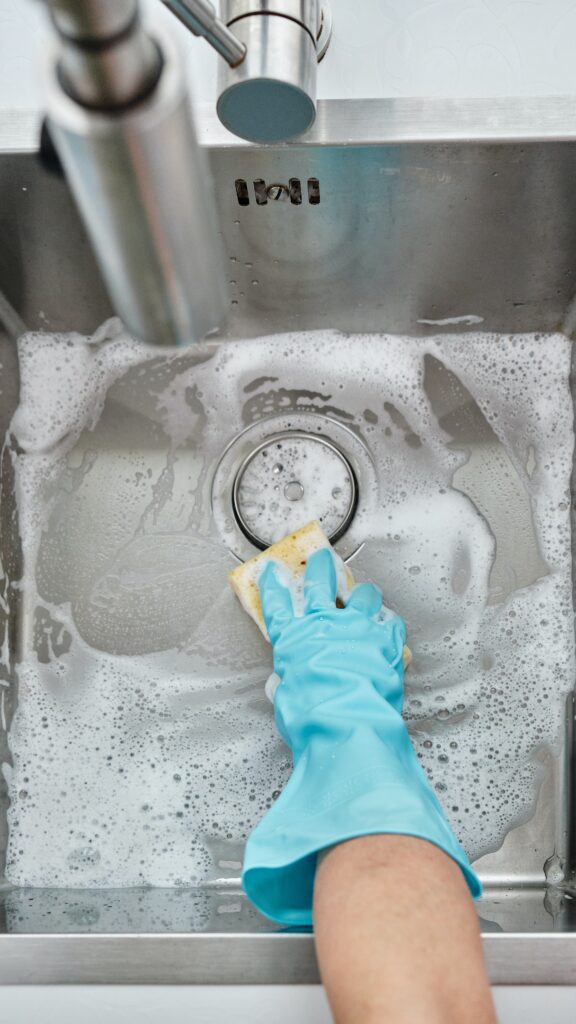
- Avoid using abrasive tools: Tools like steel wool or harsh scrub brushes can scratch the surface of your sink. Stick to soft cloths, sponges, or brushes with soft bristles.
- Don’t allow food or liquids to sit too long: Always rinse your sink thoroughly after each use to remove any food particles or residue. This will prevent the buildup of unsightly stains, grime, and odor-causing bacteria.
- Wipe your sink dry: Use a soft cloth or towel to wipe the sink after each use to prevent water spots.
- Be mindful of what you place in your sink: Avoid placing hot pans or heavy objects directly onto the surface, as they can cause dents or scratches.
- Use a sink grid or mat: Protect the bottom of your sink from scratches caused by pots, pans, or utensils by using a sink grid or mat.
- Don’t use harsh chemicals: Bleach and ammonia-based cleaners are too harsh for stainless steel and can cause discoloration or damage. Stick to mild dish soap, natural cleaning solutions, or cleaners made specifically for stainless-steel sinks.
- Use gentle scrubbing motions: When scrubbing your sink, be gentle and use circular movements to avoid scratching the stainless steel. Applying too much pressure or using rough scrubbing motions can damage the surface.
- Remember to rinse thoroughly: After cleaning your stainless steel sink, make sure to rinse it thoroughly with warm water to remove any cleaning residue. Leaving residue behind can lead to stains or a dull appearance.
- Use stainless steel cleaner for scratches: If you notice any scratches on your sink, you’ll need something more heavy-duty, like a stainless steel cleaner or polish specifically designed to remove minor scratches. Follow the manufacturer’s instructions for the best results.
How often should you clean and maintain your stainless steel sink?
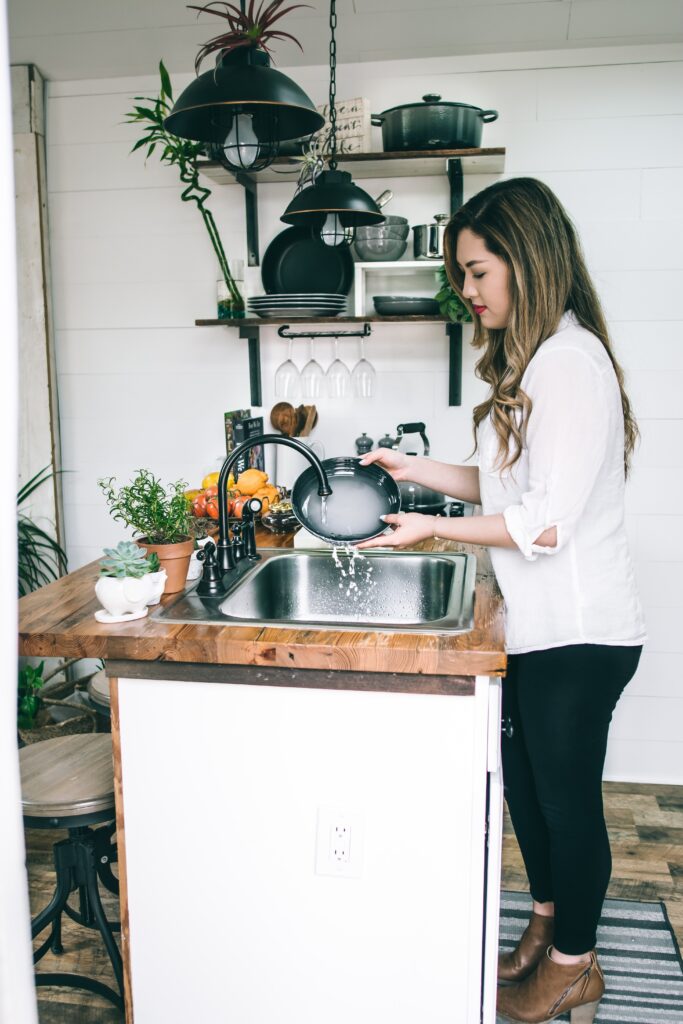
The frequency of cleaning and maintenance for your stainless steel sink depends on how often you use it and the amount of dirt or stains it accumulates. As a general guideline, we recommend cleaning your sink at least once a week to prevent the buildup of grime and maintain its natural shine.
However, if you notice any stains, weird odors, or water spots, it’s best to take care of them as soon as possible to prevent them from becoming more difficult to remove later on.
And there you have it, my fellow sink-cleaning aficionados! We’ve covered the A to Z of returning your stainless steel sink to its former glory. There’s no need to stress over smudges and water spots any longer. With a few simple natural cleaners and a little elbow grease, your sink can shine like new again. Here’s to a clean, radiant stainless steel sink that’s always ready for dishwashing action. Happy cleaning!
